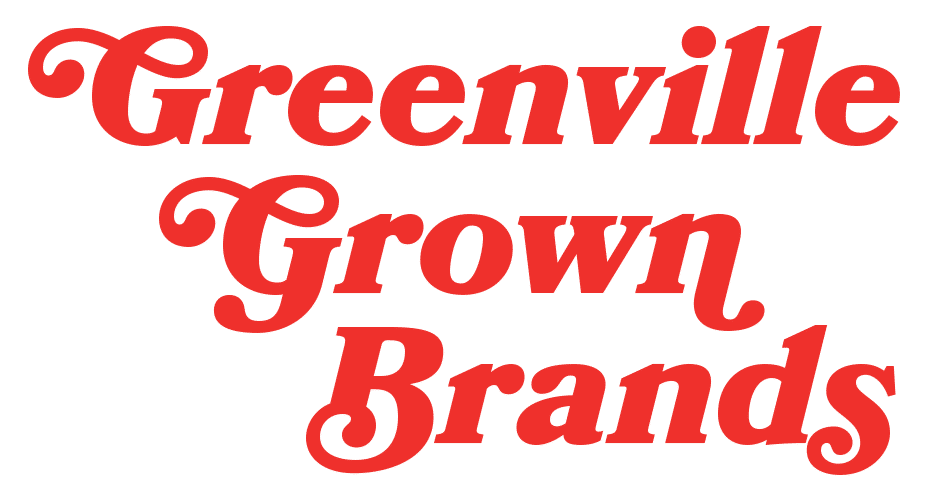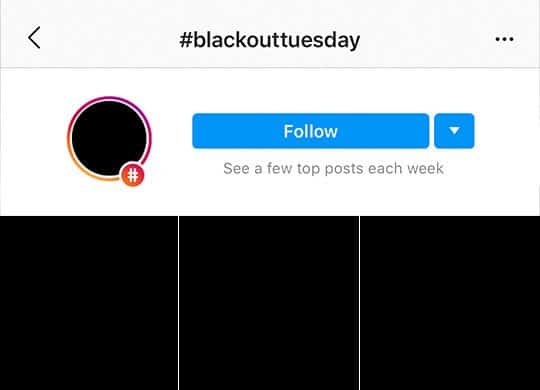Last week, you probably noticed a flood of black squares taking over your social media feeds – all accompanied by the hashtag #BlackOutTuesday.
We even shared one too.

But quickly, the black tiles were met with criticism, skepticism, and growing confusion. Who started this movement, exactly? How does it help? What does it even mean?
As marketing professionals, watching the progression of #BlackOutTuesday was a fascinating experience. Within 24 hours, an initiative that was designed for the music industry transformed into something completely different that highlighted the power (and pitfalls) of participating in social media activism and what sharing a post could mean for your brand.
The Evolution of #BlackOutTuesday
How It Started
Before it became #BlackOutTuesday, the movement was called #TheShowMustBePaused. It was an initiative started by Jamila Thomas and Brianna Agyemang, two Black women in the music industry who wanted to disrupt the work week and “take a beat for an honest, reflective, and productive conversation about what actions we need to collectively support the Black community.”
What Happened Next
Major music corporations started sharing their posts about pausing business as usual in observance of the Black community. Then celebrities started sharing black boxes in solidarity. Then influencers, then individuals.
We’re still not sure who coined the term #BlackOutTuesday. But with each share, the initial message became more and more diluted. According to CNN , “As the movement grew, the notion filtered down to individuals and brands who have vowed to not post any content on June 2nd in deference to the situation.”
And then…
In addition to being muted and listening, we saw another initiative pop up under #BlackOutTuesday. This one was related to a completely separate movement referred to as ‘Amplify Melanated Voices,’ which challenges non-Black Instagram users to refrain from posting their own content from June 1 – 7.
This movement was started by social media creators Alisha McCullough and Jessica Wilson, who encouraged participants to use the hashtags #AmplifyMelanatedVoices and #mutewhitenoise to share and promote content from Black creators, thought leaders, artists, and activists.
The Issues Accompanying the Movement
Widespread Confusion About the Initiative
As the initial purpose of the movement became more and more diluted, confusion started mounting – quickly followed by frustration over the multiple messages attached to the hashtag.
Should we speak up or stay silent? How is the movement helping? Who does it benefit? The answers lost in an echo-chamber of black tiles, confusing hashtags, and conflicting messages.
Detrimental Effects from Using the Wrong Hashtag
There was also backlash for posting the incorrect hashtag on #BlackOutTuesday. Seeing the social issues facing the Black community, users took it upon themselves to show solidarity by posting black boxes with both #BlackOutTuesday and #BlackLivesMatter or #BLM.
The issue? Black Lives Matter’s feed and pages quickly filled up with a sea of black boxes – effectively pushing down years’ worth of vital information and resources related to the movement. Essentially, people were unintentionally sabotaging the very efforts they were trying to support.
Skepticism About Calling for Silence
Many Instagram users and activists also took issue with the message that supporters should silence themselves during a time that required speaking out and sharing information.
Brittany Packnett Cunningham, a Black activist and co-founder of Campaign Zero, shared her issues with #BlackOutTuesday in an Instagram video stating, “Social media is a critical tool… It is also an important tool for activism organizers to stay connected.”
Cunningham lamented that this is time that Black voices need to be heard the most. That we needed to be sharing their stories, experiences, and resources that can help support the cause. “If we all get on our Instagram and everything is black, we’re not talking about the things that matter.”
Key Takeaways for Brands
From a marketing perspective, the evolution of #BlackOutTuesday was interesting and educational. And no matter where you stand on the issues (or whether you posted a black box or not), the movement illustrated some valuable marketing lessons about social media activism and what it means for brands.
- Do your research before posting.
As we saw with #BlackOutTuesday, social media activism can make a powerful statement – but once released into the wild, movements have the potential to change drastically. Before sharing a post as a form of solidarity, take time to ensure that you understand:
- What the post stands for
- Which hashtags to use
- How posting helps the community you’re supporting
- Listen to feedback.
Once you participate in a social media movement, that doesn’t mean your brand is done. Followers may voice their opinions or ask questions about your post, and you should be prepared to respond with details like:
- Why you’re participating in the social media movement
- Who the movement supports
- How your followers can help (either by re-sharing, donating, signing a petition, etc.)
- Practice what you preach.
In the past, simply sharing a social media post in solidarity with a given movement was an easy way to show that your brand was mission-focused. But now, brands are being held accountable for what they post.
Consumers are not only expecting brands to speak up, they are telling them to take action . Consumers know that performative activism isn’t enough anymore – it was never enough. And now it’s time for brands to step up.
So, if your business shared a black tile last Tuesday, you need to be sure that your brand values align with that action and that you are committed to continue working towards the change you posted about.
At FUEL, we’re taking a deeper look at ways that we can provide more opportunities to the Black, Indigenous, and People of Color (BIPOC) community. For us, that means being more intentional with our recruitment methods, continuing to support local Black-owned businesses, and searching for other ways that we can contribute more meaningfully to the Black community and our entire community of Greenville.
Bottom Line: The world is changing. And even with its issues and backlash, #BlackOutTuesday helped shed light on that change. People are speaking out and showing us that silence is no longer acceptable when it comes to human rights. So, as your business continues navigating the complicated and ever-evolving world of social media, it’s worth asking yourself: “How can my brand help?”
The post #BlackOutTuesday: Marketing Lessons from a Social Media Movement appeared first on FUEL .







